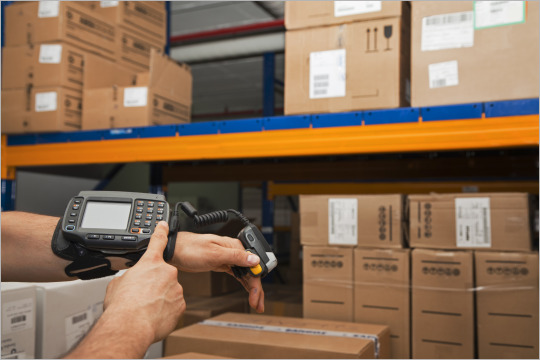Your products are the heart of your business, and shipping is what gets them where they need to go. Naturally, there’s a cost involved in making that journey happen, as there are logistics, fuel, handling, and a whole lot more that go into getting your package from point A to point B.
Now, imagine you’re sending a package, and you need it there fast. Or maybe it’s super fragile and needs extra special attention. These extra needs require extra effort from the shipping carrier, and that’s where shipping surcharges come into play. They are add-ons to your base shipping cost and cover the specialized services or unique circumstances.
Without understanding these surcharges, you could be in for a nasty surprise when you see your shipping bill. So, we are going to break down what shipping surcharges are, why they exist, and, most importantly, how you can manage them to keep your shipping costs under control and your profits healthy.
What is a Shipping Surcharge?
A shipping surcharge is an additional fee charged on top of your base shipping rate. It covers specialized services, unusual handling requirements, or specific delivery locations that go beyond standard shipping procedures. It is the price you pay for the extras.
For example, if you ship a package to a remote rural area, you might encounter a “delivery area surcharge.” This surcharge applies because it costs the carrier more time and resources to reach that remote location compared to standard urban delivery.
Factors Influencing Shipping Surcharges
Shipping surcharges are affected by factors such as:
- Fuel costs
- Delivery location
- Package size and weight
- Handling requirements
- Delivery address accuracy
- Delivery speed and timing
- Time of year
Each of these factors can lead to different types of surcharges being applied to your shipping costs. Some types of shipping surcharges include:
1. Fuel Surcharges
Fuel surcharges are added to all shipments to account for the fluctuating costs of fuel. Carriers adjust these surcharges based on current fuel prices, which means they can change frequently. These surcharges help carriers cover their transportation expenses, but they also impact your overall shipping costs. You’ll typically see fuel surcharges applied universally, regardless of where your package is going. Because fuel prices can be volatile, these surcharges can also fluctuate.
2. Delivery Area Surcharges
Delivery area surcharges apply when you ship to remote or hard-to-reach locations. These areas often require extra time and resources for carriers to service, leading to increased costs. The surcharge helps compensate for these added expenses. If your business frequently ships to rural or distant addresses, these surcharges can become a significant factor in your overall shipping costs.
3. Additional Handling Surcharges
Packages that require special handling due to their size, weight, or packaging may incur additional handling surcharges. This is because non-standard packages often need specialized equipment or extra labor to process. These surcharges cover the added costs and resources required for safe and efficient handling. If you regularly ship items that are unusually shaped, heavy, or fragile, you’ll want to be aware of these charges.
4. Address Correction Surcharges
If you provide an incorrect or incomplete delivery address, the carrier may charge an address correction surcharge. This fee covers the cost of rerouting or correcting the shipment. Inaccurate addresses can lead to delays and extra work for the carrier, and this surcharge compensates them for that effort. Double-checking your addresses before shipping can help you avoid this surcharge.
5. Residential Surcharges
Deliveries to residential addresses often incur a residential surcharge. This is because residential deliveries can sometimes be more time-consuming and complex than deliveries to businesses. Carriers might have to navigate residential streets, deal with limited access, or make multiple attempts to deliver when no one is home. This surcharge helps cover those additional costs.
6. Oversize and Overweight Package Surcharges
Packages that exceed certain size or weight limits are subject to oversized and overweight surcharges. These surcharges cover the extra resources and logistical considerations required to handle these large or heavy items. Oversized and overweight packages often require special handling, extra space in the delivery vehicle, and potentially more fuel. These surcharges reflect the added cost of transporting these non-standard packages.
7. Direct Signature Surcharge
If you require a signature upon delivery, you may incur a direct signature surcharge. This service provides extra security for valuable or sensitive shipments. The signature confirms that the package was delivered to the intended recipient. This surcharge covers the additional step the carrier takes to obtain the signature.
8. Weekend and Specific Day Surcharges
Deliveries scheduled on weekends or specific days outside of normal business hours may be subject to surcharges. These surcharges cover the extra cost of providing service during non-standard times. If you need a package delivered on a Saturday or Sunday, or perhaps on a holiday, expect to pay a little extra.
9. Peak Season and Holiday Surcharges
During peak seasons, like the holidays, shipping volumes increase significantly. Carriers may implement peak season surcharges to manage this increased demand. These surcharges help them cover the additional operational costs associated with higher volumes, such as extra staff, extended hours, and increased logistical challenges. These surcharges are usually temporary and apply only during specific high-volume periods.
Impact of Shipping Surcharges on Businesses
Shipping surcharges can have a significant impact on businesses of all sizes. Let’s explore some of the key ways these extra fees can affect your bottom line:
1. Increased Shipping Costs
This one might seem obvious, but it’s worth emphasizing. Surcharges directly increase your overall shipping expenses, which can affect your profit margins if not handled effectively. Unexpected or poorly understood surcharges can lead to budget overruns and financial strain, especially for businesses with high shipping volumes or those that frequently ship to remote locations or handle non-standard packages.
2. Pricing Challenges
Surcharges can make it challenging to accurately price your products and offer competitive shipping rates to your customers. If you don’t factor in potential surcharges when setting your prices, you might end up absorbing those extra costs and reducing your profits. On the other hand, if you pass those surcharges directly to your customers, you risk losing their business to competitors who offer more transparent or affordable shipping options.
3. Customer Dissatisfaction
Unexpected or high shipping surcharges can lead to customer dissatisfaction and potentially damage your brand reputation. Customers might feel misled if the final shipping cost is significantly higher than what they initially expected. This can result in negative reviews, cart abandonment, and decreased customer loyalty.
How Consumers Can Navigate Shipping Surcharges
Shipping surcharges can significantly increase the overall cost of online purchases. To help your customers navigate these extra fees, start by being transparent about potential surcharges. Clearly display them on your website and during checkout, with detailed explanations of what each surcharge covers. Offer address verification tools to prevent address correction fees and provide a variety of packaging options so customers can choose the most cost-effective choice. These steps can help you offer a more satisfying shopping experience.
Best Practices for Businesses to Manage Surcharges
Now that you know how surcharges work and how they can impact your business and customers, let’s take a look at some strategies to manage these additional charges.
1. Verify Shipping Addresses
One of the simplest ways to avoid unnecessary surcharges is to ensure accurate shipping addresses. Address correction fees can add up quickly, so verifying addresses before shipping is crucial. You can use address verification tools or services to validate addresses at checkout. This helps prevent errors and ensures your packages reach the correct destination the first time.
2. Optimize Packaging
Using standard packaging sizes and optimizing dimensions can help you avoid additional handling and oversize surcharges. Carriers have specific guidelines for package sizes and weights, and exceeding these limits can trigger extra fees. By choosing appropriate packaging and minimizing unnecessary empty space, you can keep your packages within the standard limits and avoid these surcharges.
For example, if you’re shipping a small item in a large box with excessive packing material, you might incur an oversized surcharge even though the item itself is small. Using a smaller box or custom inserts to secure the item and minimize wasted space can help you avoid this extra cost.
3. Choose the Right Carrier and Service
Selecting the appropriate carrier and shipping service for each shipment is crucial for managing surcharges. Different carriers have different rates and surcharges, and some services may be more cost-effective than others, depending on your needs. Comparing rates and services across multiple carriers can help you find the best option for each shipment.
For example, if you need to ship a package quickly, you might compare the expedited delivery surcharges among different carriers to find the most affordable option. If you’re shipping to a remote area, you might choose a regional carrier that specializes in deliveries to that area and offers lower delivery area surcharges.
4. Shorten Shipping Routes
Reducing delivery distance can help you minimize surcharges, especially those related to remote or rural deliveries. Offering localized pickup options or partnering with regional carriers can help you shorten shipping routes and avoid those costly delivery area surcharges.
For example, if you have a customer in a remote area, you could offer them the option to pick up their order from a local store or distribution center. This eliminates the need for a long-distance delivery and avoids the associated surcharge. Partnering with a regional carrier that specializes in deliveries to that area can also be a cost-effective solution.
5. Monitor and Review Shipping Invoices
Regularly reviewing your shipping invoices is essential for identifying discrepancies and preventing overcharges. Carriers can sometimes make mistakes, and it’s important to catch these errors early to avoid paying for surcharges you don’t owe. Monitoring your invoices also helps you track surcharge trends and identify areas where you can optimize your shipping strategy.
For example, if you notice a sudden increase in fuel surcharges on your invoices, you can investigate the cause and potentially negotiate with your carrier for a better rate. If you find an address correction surcharge that you believe is incorrect, you can contact the carrier and provide evidence to dispute the charge. Regular invoice audits ensure you’re only paying for legitimate surcharges and protect your profit margins.
6. Negotiate Surcharge Terms
Negotiating surcharge terms with your carriers can be an effective way to reduce your shipping costs, especially during peak seasons or for high-volume shipments. Carriers are often willing to work with businesses to offer discounts or customized rates, especially if you have a strong relationship with them.
If you anticipate a surge in shipments during the holiday season, you can negotiate with your carrier for a lower peak season surcharge or a cap on the total amount you’ll be charged. If you regularly ship large volumes of packages, you might be able to negotiate a discount on fuel surcharges or other fees. Don’t be afraid to ask your carrier for better terms. You might be surprised at what you can achieve!
7. Adopt Technology to Automate Surcharge Management
Technology can play a significant role in managing shipping surcharges. Tools like LateShipment.com’s Parcel Audit and Shipping Refund software can automate many aspects of surcharge management, saving you time and effort while improving accuracy. These tools can automatically identify and track surcharges, flag potential errors, and even help you negotiate with carriers for better rates.
Optimize Shipping Costs with LateShipment.com
Shipping surcharges are a fact of life for businesses that ship products. While they are often unavoidable, they aren’t always applied correctly. This is why it’s essential to catch invoice mistakes early so you can notify carriers and claim refunds. Manually auditing every invoice is a painstaking process, but you can automate it with LateShipment.com. It’s a comprehensive platform that handles your post-purchase needs, specializing in cost optimization and customer experience management.
LateShipment.com’s Parcel Audit and Shipping Refund software is an incredibly simple way to recover refunds for late deliveries, lost and damaged parcels, and more. It’s fully automated to maximize your savings. The software seamlessly integrates with over 1200 carriers and tools, automatically identifying over 50 service failures and potentially saving you up to 20% on shipping costs. It also reduces the time you spend on claims management by 100%.








